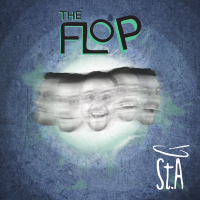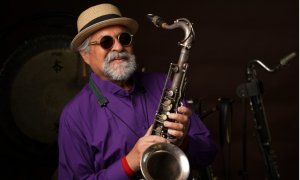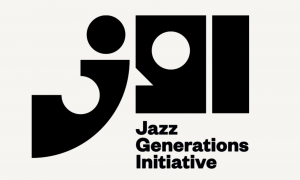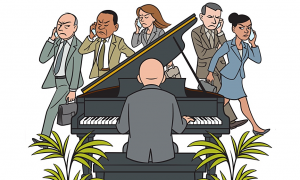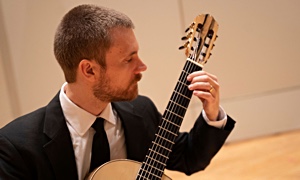The National Jazz Museum in Harlem
104 East 126th Street
New York, NY 10035
212 348-8300
Jazz Museum Events, November 13-19, 2007
Count Basie on film November 13, 2007, 7pm
Jazz Film Month continues with a classically representative example of swing and swingin' at the very highest levels of aesthetic endeavor. The Count Basie Orchestra was for decades a pinnacle of the big band sound that defined and refined an era. Their peerless coordination of the elements of melody, harmony and improvisation created sound portraits the quality and magnitude of which has rarely been heard in such pristine beauty.
Come lose yourself in the wonder of the Count Basie Orchestra.
Tuesday, November 13, 2007
JAZZ for CURIOUS LISTENERS
7:00 pm | At the Harlem School of the Arts
Free
November is Jazz Film Month!
Tonight's feature: Count Basie
Host: Greg Thomas
Count Basie led perhaps the most powerfully swingin' big band in the land for decades, playing his patented minimalist style and leading his orchestra with the pure force of his quiet authority. He was a leading figure of the swing era in jazz and, alongside Duke Ellington, the premier representative of big band style. After studying piano with his mother, as a young man he went to New York, where he met James P. Johnson, Fats Waller (with whom he studied informally), another pianist of the Harlem stride school. Before he was 20 years old, he toured extensively on the Keith and TOBA vaudeville circuits as a solo pianist, accompanist, and music director for blues singers, dancers, and comedians. This provided an early training that was to prove significant in his later career. Stranded in Kansas City in 1927 while accompanying a touring group, he remained there, playing in silent-film theaters. In July 1928, he joined Walter Page's Blue Devils which, in addition to Page, included Jimmy Rushing; both later figured prominently in Basie's own band. Basie left the Blue Devils early in 1929 to play with two lesser-known bands in the area. Later that year, he joined Bennie Moten's Kansas City Orchestra, as did the other key members of the Blue Devils shortly after.
When Moten died suddenly in 1935, the band continued under Buster Moten, but Basie left soon thereafter. The same year, with Buster Smith and several other former members of Moten's orchestra, Basie organized a new, smaller group of nine musicians, which included Jo Jones and later Lester Young, and as the Barons of Rhythm began a long engagement at the Reno Club in Kansas City. The group's radio broadcasts in 1936 led to contracts with a national booking agency and the Decca Record Company. The contract expanded and within a year the Count Basie Orchestra, as it had become known, was one of the leading big bands of the swing era. By the end of the 1930s, the band had acquired international fame with such pieces as One o'clock Jump (1937), Jumpin' at the Woodside (1938), and Taxi War Dance (1939).
In 1950, financial considerations forced Basie to disband, and for the next two years he led a six- to nine-piece group; among its sidemen were Clark Terry, Buddy DeFranco, Serge Chaloff, and Buddy Rich. After reorganizing a big band in 1952, he undertook a long series of tours and recording sessions that eventually established him as an elder statesman of jazz, and his band was established as a permanent jazz institution and training ground for young musicians. He made the first of many tours of Europe in 1954, visited Japan in 1963, and issued a large number of recordings both under his own name and under the leadership of various singers, most notably Frank Sinatra. In the mid-1970s, a serious illness hampered his career, and in the 1980s he sometimes had to perform from a wheelchair. Basie devoted time increasingly to his autobiography. After Basie's death, the band continued under the direction of Thad Jones (1985-6) Frank Foster, and previous Harlem Speaks guest Bill Hughes. As the Countsmen, a number of his former sidemen have also reconvened occasionally for concerts and tours.
Come bask in the perennial Kansas City swing of Count Basie on film! This press release was composed and edited by Greg Thomas.
The National Jazz Museum in Harlem has been ensconced in its Harlem offices for over five years now; its public programs now attract several thousand people a year as they continue their efforts to obtain a permanent home.
Remaining Jazz Museum events for November 2007:
Tuesday, November 20, 2007
JAZZ for CURIOUS LISTENERS
7:00 pm | At the Harlem School of the Arts
Free
Tonight's film feature: Miles Davis
Miles Davis's cool mid-register tone was a deeply expressive contrast to the bright, high note style of Louis Armstrong, Roy Eldridge, and Dizzy Gillespie. The leader of several of the most thrilling and innovative small ensembles in jazz history, Davis was at the forefront of the most cutting edge and experimental styles from the 1940s to the 1960s.
Tuesday, November 27, 2007
JAZZ for CURIOUS LISTENERS
7:00 pm | At the Harlem School of the Arts
Free
Tonight's film feature: Rarities
Thursday, November 29, 2007
Harlem Speaks
Jazzmobile Legend Johnny Garry
6:30 pm | at the Harlem School of the Arts
call 212-348-8300 to RSVP
FREE
Coming in December . . . a new series . . . Jazz for Curious Readers! The first installment will be led by previous Harlem Speaks guest Herb Boyd on Dec. 3rd at the New York Public Library 203 West 115th Street from 6pm - 7:30 pm.
104 East 126th Street
New York, NY 10035
212 348-8300
Jazz Museum Events, November 13-19, 2007
Count Basie on film November 13, 2007, 7pm
Jazz Film Month continues with a classically representative example of swing and swingin' at the very highest levels of aesthetic endeavor. The Count Basie Orchestra was for decades a pinnacle of the big band sound that defined and refined an era. Their peerless coordination of the elements of melody, harmony and improvisation created sound portraits the quality and magnitude of which has rarely been heard in such pristine beauty.
Come lose yourself in the wonder of the Count Basie Orchestra.
Tuesday, November 13, 2007
JAZZ for CURIOUS LISTENERS
7:00 pm | At the Harlem School of the Arts
Free
November is Jazz Film Month!
Tonight's feature: Count Basie
Host: Greg Thomas
Count Basie led perhaps the most powerfully swingin' big band in the land for decades, playing his patented minimalist style and leading his orchestra with the pure force of his quiet authority. He was a leading figure of the swing era in jazz and, alongside Duke Ellington, the premier representative of big band style. After studying piano with his mother, as a young man he went to New York, where he met James P. Johnson, Fats Waller (with whom he studied informally), another pianist of the Harlem stride school. Before he was 20 years old, he toured extensively on the Keith and TOBA vaudeville circuits as a solo pianist, accompanist, and music director for blues singers, dancers, and comedians. This provided an early training that was to prove significant in his later career. Stranded in Kansas City in 1927 while accompanying a touring group, he remained there, playing in silent-film theaters. In July 1928, he joined Walter Page's Blue Devils which, in addition to Page, included Jimmy Rushing; both later figured prominently in Basie's own band. Basie left the Blue Devils early in 1929 to play with two lesser-known bands in the area. Later that year, he joined Bennie Moten's Kansas City Orchestra, as did the other key members of the Blue Devils shortly after.
When Moten died suddenly in 1935, the band continued under Buster Moten, but Basie left soon thereafter. The same year, with Buster Smith and several other former members of Moten's orchestra, Basie organized a new, smaller group of nine musicians, which included Jo Jones and later Lester Young, and as the Barons of Rhythm began a long engagement at the Reno Club in Kansas City. The group's radio broadcasts in 1936 led to contracts with a national booking agency and the Decca Record Company. The contract expanded and within a year the Count Basie Orchestra, as it had become known, was one of the leading big bands of the swing era. By the end of the 1930s, the band had acquired international fame with such pieces as One o'clock Jump (1937), Jumpin' at the Woodside (1938), and Taxi War Dance (1939).
In 1950, financial considerations forced Basie to disband, and for the next two years he led a six- to nine-piece group; among its sidemen were Clark Terry, Buddy DeFranco, Serge Chaloff, and Buddy Rich. After reorganizing a big band in 1952, he undertook a long series of tours and recording sessions that eventually established him as an elder statesman of jazz, and his band was established as a permanent jazz institution and training ground for young musicians. He made the first of many tours of Europe in 1954, visited Japan in 1963, and issued a large number of recordings both under his own name and under the leadership of various singers, most notably Frank Sinatra. In the mid-1970s, a serious illness hampered his career, and in the 1980s he sometimes had to perform from a wheelchair. Basie devoted time increasingly to his autobiography. After Basie's death, the band continued under the direction of Thad Jones (1985-6) Frank Foster, and previous Harlem Speaks guest Bill Hughes. As the Countsmen, a number of his former sidemen have also reconvened occasionally for concerts and tours.
Come bask in the perennial Kansas City swing of Count Basie on film! This press release was composed and edited by Greg Thomas.
The National Jazz Museum in Harlem has been ensconced in its Harlem offices for over five years now; its public programs now attract several thousand people a year as they continue their efforts to obtain a permanent home.
Remaining Jazz Museum events for November 2007:
Tuesday, November 20, 2007
JAZZ for CURIOUS LISTENERS
7:00 pm | At the Harlem School of the Arts
Free
Tonight's film feature: Miles Davis
Miles Davis's cool mid-register tone was a deeply expressive contrast to the bright, high note style of Louis Armstrong, Roy Eldridge, and Dizzy Gillespie. The leader of several of the most thrilling and innovative small ensembles in jazz history, Davis was at the forefront of the most cutting edge and experimental styles from the 1940s to the 1960s.
Tuesday, November 27, 2007
JAZZ for CURIOUS LISTENERS
7:00 pm | At the Harlem School of the Arts
Free
Tonight's film feature: Rarities
Thursday, November 29, 2007
Harlem Speaks
Jazzmobile Legend Johnny Garry
6:30 pm | at the Harlem School of the Arts
call 212-348-8300 to RSVP
FREE
Coming in December . . . a new series . . . Jazz for Curious Readers! The first installment will be led by previous Harlem Speaks guest Herb Boyd on Dec. 3rd at the New York Public Library 203 West 115th Street from 6pm - 7:30 pm.
For more information contact Jim Eigo, Jazz Promo Services.








